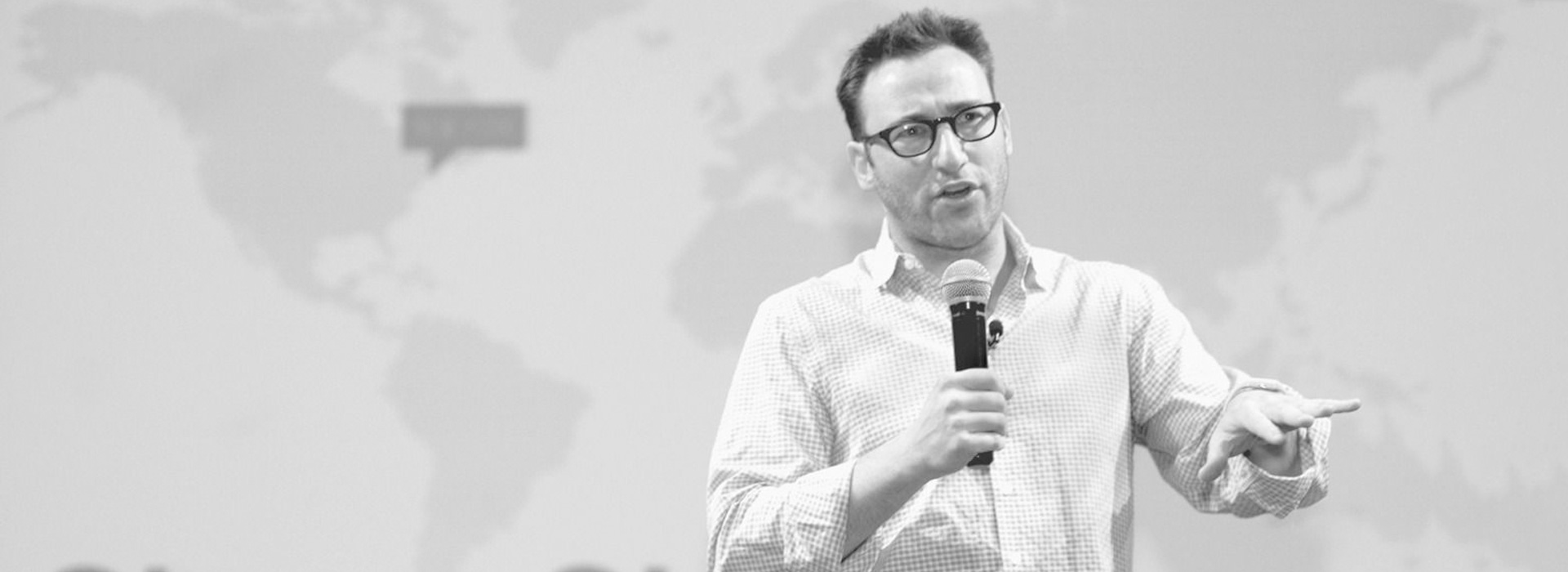People don’t buy what you do, they buy why you do it.
It’s a deceptively simple statement. You might even consider it to be simplistic, but these words and the mindset that inform them have become an essential tool for us here at Locus, as well as many other companies around the world.
And the proof is in the pudding: Simon’s original TED talk – “how great leaders inspire action” is currently the 3rd most viewed of all time, with 31 Million views.
Simon Sinek: How great leaders inspire action
Simon Sinek’s concept of “starting with why” gave us a new framework to clearly articulate the intent behind our work, so it was with great anticipation that Tracey and I went hear directly from Simon Sinek at the ‘Start With Why Leadership Forum’ hosted by the Growth Faculty.
Locus found a real resonance with this concept (along with millions of other people who have watched Simon’s video) when we first came across it [I think that was back in about 2012 for me]. For us, the act of creating great design, developing great products, and helping businesses become great requires a kind of coherence with why we or our clients want to achieve those outcomes in the first place.
We know that having a well-articulated reason for why we do anything helps drive consistent and creative work that we love to do. It sets us up for success. However, when we lose sight of that ‘why’, or neglect to articulate it well in the first place, we can almost guarantee that things will get difficult.
So, what actually went down on the day?
Session 1: Simon Sinek
Simon has clearly not been resting on his laurels. While the base tenet of his thinking remains ‘start with why’, he has clearly spent the last 6 years building on that baseline. In the first session, Simon presented to us an expanded view on how great leaders inspire action. We’ll be blogging about this in more detail, so watch this space.
Quote of the session: “The reason we call it vision is because we have to SEE it!”
Session 2: Simon Sinek Q&A
Anyone can rote learn a presentation, but the rubber meets the road when they’re asked questions. After a short break, Simon fielded questions from the room for a solid 90 minutes. This was a chance for people in the audience to see how Simon’s thinking could be applied to their personal challenges.
A few of my favourites were:
- How do we manage the effect of depressed employees on our organisation?
Simon: “Ok… How much time do we have again? …” - How do we foster our team’s understanding and buy-in to our why?
Simon: “Visionaries speak in the present tense, and speak in pictures, not philosophy.” - How do we get the different divisions of our businesses to talk to one another?
Simon: “Ah, you mean your titanium silos of excellence? “
Again, there were some nuggets here that deserve more attention that what we can give in our summary post. Keep your eyes peeled.
Lunch
Pretty good. The roast lamb was probably my favourite.
Session 3: Peter Docker
Peter is the ‘execution’ to Simon’s ‘strategy’. His role for the day was to give us some practical activity to implement some of the principles discussed by Simon. His key message centred on this:
That leadership is about creating simplicity of purpose.
This led in to a light version of what Peter called a “Why Discovery” exercise; the process that Peter, Simon and their team use to help businesses articulate their purpose. We won’t go into detail on it here, but it centred around three key questions:
- What is a specific story of when you were proud of your organisation/business?
- What was it in that story that your business allowed others to be or to do?
- What insight does that give us into your purpose (your why)?
Those of you with sharp eyes will see some overlap here between Peter’s ‘why discovery’ and an empathy research process, but that’s a topic for another blog post.
Session 4: Peter Docker
With the groundwork laid from the previous three sessions, Peter worked to articulate for us the concept of Adaptive Leadership, or the process of solving for adaptive challenges.
Put simply this is about how to take action when there is no ‘formula’ to follow.
In R&D we are presented with similar ambiguous challenges often. The context, subject matter and pathway are always unique and we have learned that the ‘cookie cutter’ approach (applying in the same process, regardless of context) is not a good way to ensure the right result.
Peter’s articulation of this gave us a fresh lens on these challenges, which we’re looking forward to exploring further in the coming months.
In Summary
Perhaps the best way to sum up the day is to describe the car trip from Auckland back to Tauranga that evening. Usually Tracey and I will spend the entire trip talking shop, making plans and wrestling with challenges. This drive was different. Outside of agreeing to a quick burger at the Bombay hills, our tired minds preferred to sit in silence, quietly turning over the day internally.
I suspect that this event will be driving conversation here at Locus across the coming weeks, if not months, and already I’m finding new language around some of the challenges we address on a daily basis. So instead of pre-empting that thinking, I’ll leave you with this: Go watch Simon’s ‘Start with Why’ TED talk, and start to think about the specific moments where your business has been the best version of itself. There’s probably a glimmer of your ‘why’ in those moments.
Want to read more on creativity, design, product development and innovation? Go to our Six Lenses Blog.


Comments